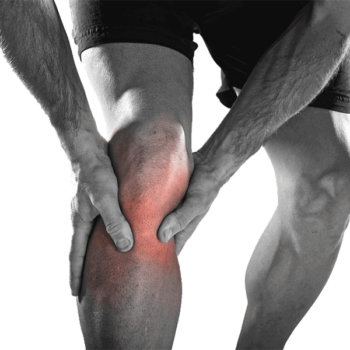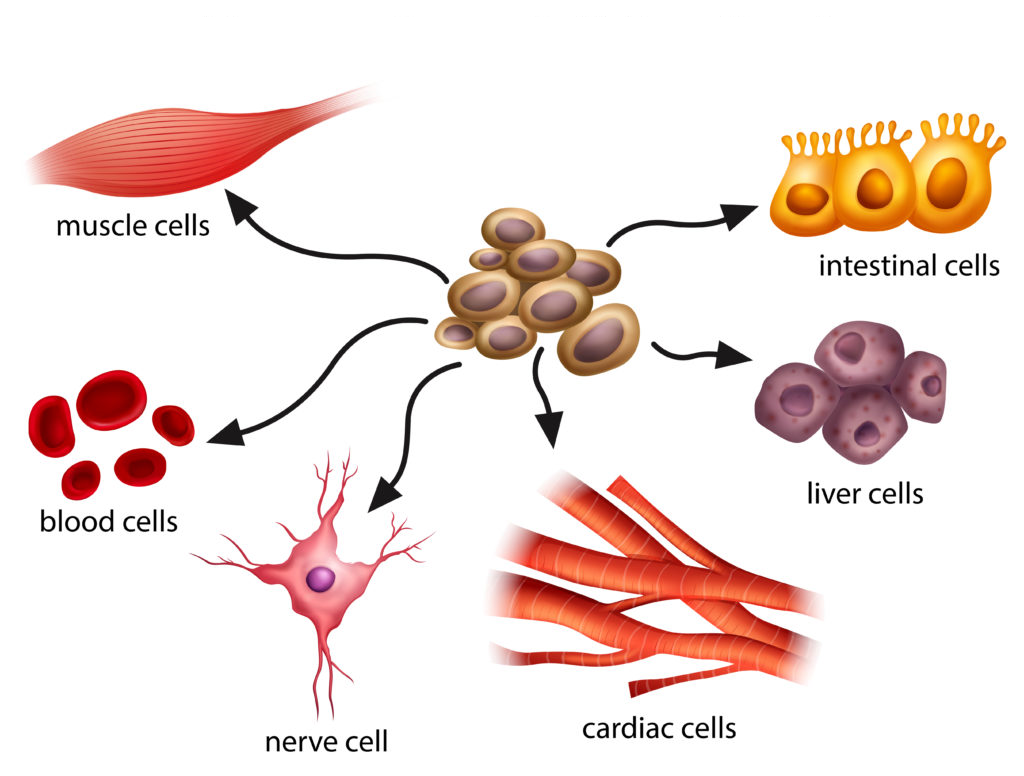
 Oregonians are curious, if not downright excited about perinatal tissue therapy. And, we should be. It’s likely that the continued development of perinatal tissue therapies to control or eliminate pain, to treat diabetic neuropathy, to abate addiction and more will ultimately be the defining medical advancement of our generation, just as was the polio vaccine and other global medical game changers.
Oregonians are curious, if not downright excited about perinatal tissue therapy. And, we should be. It’s likely that the continued development of perinatal tissue therapies to control or eliminate pain, to treat diabetic neuropathy, to abate addiction and more will ultimately be the defining medical advancement of our generation, just as was the polio vaccine and other global medical game changers.
We should also be rightly proud of the work of OHSU’s Dr. Shoukhrat Mitalipov, who is committed to moving perinatal tissue and other genetic therapies forward. The CBS television show, 60 Minutes, included Dr. Shoukhrat in their story about perinatal tissue therapy and other genetic treatments.
And, Whitmire Chiropractic and Wellness is Salem, Oregon’s premier perinatal tissue therapy provider, continuing our commitment to healthcare for the best you.
But, what is perinatal tissue therapy? What is perinatal tissue? How does Perinatal tissue therapy work? Where do perinatal tissue come from? What’s the science behind perinatal tissue therapy? What are the potential risks and side effects of treatment with perinatal tissue? These and more are all common questions that you might be asking and we’re here to answer them for you.
What is Perinatal TissueTherapy?
 Perinatal tissue therapy is the process over time where new healthy cells are introduced into our body with a specific goal, such as increasing peripheral blood flow in the legs of a diabetic or reducing plaque buildup in a heart patient.
Perinatal tissue therapy is the process over time where new healthy cells are introduced into our body with a specific goal, such as increasing peripheral blood flow in the legs of a diabetic or reducing plaque buildup in a heart patient.
Perinatal tissue is introduced over a period of weeks, slowly ramping up the body’s ability to heal itself.
These treatments are delivered by injection in our professional office with minimal discomfort and no downtime.
The Mayo Clinic, in this article, does a good job explaining the basics of perinatal tissue therapy, as well as why scientists and doctors are so excited about the current treatments and those that are being researched.
Perinatal tissue therapy is, can and will completely change the way that we deal with injuries and illnesses today and in the future.
For example, perinatal tissue therapy is very common as part of cancer treatment protocols. Perinatal tissue is used during and after chemotherapy to help the patient’s own healing process move faster. This helps the patient’s health and comfort during chemotherapy as well as improving post-treatment recovery.
What Is Perinatal Tissue?
Perinatal tissue, defined simply, is the “mother” cells in our body. They “birth” cells that either produce more cells, known as self-renewal, or they produce specialized cells, including heart cells, brain cells, muscle cells and more, known as differentiation.
Even as science is continuing to unlock the secrets of perinatal tissue, we already know that a few mother cells produce millions, if not billions of cells that are programmed to do different and often very specific things inside our body.
And, our knowledge of perinatal tissue has already advanced to the point where scientists and doctors are able to reprogram cells, in effect changing their purpose, so that they can be aimed with a specific medical treatment outcome.
When a human is developing into a fetus, it is perinatal tissue that is fueling the growth of our bones, our organs, our skin, hair and everything else that makes a human fetus.
At this stage of our lifecycle, perinatal tissue is incredibly plentiful, because there is so much construction going on. If our early developing body was a construction site, perinatal tissue would be the workers scurrying around to build something- the concrete workers, plumbers, electricians, HVAC workers, etc.
As infants, we might have 1 perinatal tissue cell for every 100,000 cells in our bodies. That might not seem like a lot, but these are very powerful cells with the ability to steer millions of other cells into building our heart, our brain and our body.
But, as we age, the ratio of cells reduces quickly. And, the older we get, the longer it takes us to heal from illness or injury, because there are less cells to birth new healthy cells.
This doesn’t mean that we have no cells, just fewer of them. So, that stubbed toe or flu takes much longer to heal than it did when we were young children because there are less and less cells to initiate and maintain our healing processes.
 But, with perinatal tissue therapy, high quantity, young and energetic cells are introduced into your body, boosting its ability to fight disease by replacing damaged cells with brand new, energetic cells and increasing the quantity your body has available. Simply put, perinatal tissue is the accelerators of healing and growth and introducing more, healthy cells into our older body gives us the ability to grow and heal as if our body is much younger.
But, with perinatal tissue therapy, high quantity, young and energetic cells are introduced into your body, boosting its ability to fight disease by replacing damaged cells with brand new, energetic cells and increasing the quantity your body has available. Simply put, perinatal tissue is the accelerators of healing and growth and introducing more, healthy cells into our older body gives us the ability to grow and heal as if our body is much younger.
How Does Perinatal Tissue Therapy Work?
Perinatal tissue therapy is like a microscopic organ transplant. Perinatal tissue is manipulated to a specific bodily function in a laboratory. These specialized cells are then injected into the body part or organ where we want them to do what they do.
These specialized cells than trigger the body’s natural healing processes.
As an example, let’s say that you have chronic hip pain. Without perinatal tissue therapy, also known as regenerative medicine, your options are ongoing pain medications, including anti-inflammatory medications with their dangerous and addictive side effects or a costly and invasive hip replacement surgery. Neither one is fun. And, hip replacements often have to be redone, so you get to go through the process more than once. They also require an extended recovery time with limited mobility and more medications to reduce the new pain caused by the surgery itself.
With treatments at a perinatal tissue clinic, early life cells are injected into the same damaged knee. Because there are so many, they trigger the body’s healing process. Some would call this a reversal of the damage, but it’s actually more like a rebirth of healthy knee cartilage and/or synovial fluid.
And, perinatal tissue is being used to help with liver and kidney failure, addiction and many other health conditions that would otherwise require chronic treatment or medications.
The work with perinatal tissue is still in its earliest stages, so the conditions that can be treated as medical science learns a deeper ability to manipulate cells is staggering.
What Is the Science Behind Perinatal Tissue Therapy?
 The generation of perinatal tissue in a lab starts with asking what we want particular cells to do. If we want to improve blood or blood flow, we need bone marrow cells, also known as hematopoietic cells. If we want cells that impact brain function, then we need brain cells.
The generation of perinatal tissue in a lab starts with asking what we want particular cells to do. If we want to improve blood or blood flow, we need bone marrow cells, also known as hematopoietic cells. If we want cells that impact brain function, then we need brain cells.
Science has advanced far enough already with perinatal tissue that major cells have been identified and their characteristics inventoried. There’s a host of great cell information from the National Institutes of Health.
So, once we know what we want the perinatal tissue therapy to do, it’s simply a matter of “teaching” or tweaking cells for that specific bodily function or organ.
Using a donated egg, scientists extract perinatal tissue cells, then adjust them for the function that we want. They also confirm that there are no abnormalities in the cells. From every donated egg, millions of cells are extracted and portioned out to various functions.
These cells are then sent to us mixed in a natural medium. We inject the cells in a series of treatments to trigger your body’s natural healing machine, focusing all of that healing on exactly what and where you need it.
Over the course of your treatments, we are increasing and maintaining your body’s natural ability to heal itself and helping you to avoid expensive and painful surgery and/or medications that do nothing to heal the problem, instead only masking the symptoms.
What’s amazing is that the newly introduced perinatal tissue seems to sense the injured area and rapidly move to it, even though science doesn’t completely understand how or why cells have this awareness.
But, scientists are taking perinatal tissue therapy one step further. They are teaching cells that already have a defined function to revert back to the state they had when they became a cell in the first place, then reprogrammed to a specific function. The cells that are reproduced are known as induced pluripotent cells (iPS).
The greater the scientific research and advancement, the greater the scope of what perinatal tissue can do for us. But, the root is always the same- activate the younger, vibrant version of our own healing process.
The Food and Drug Administration (FDA) regulates medical treatments and they provide guidelines to practitioners, including Whitmire Chiropractic and Wellness, as to how perinatal tissue treatments should be used and administered.
Where Does Perinatal Tissue Come From?
Perinatal Tissue is typically derived from donated eggs that are fertilized in laboratories. Unlike fertilized eggs that produce a baby, these eggs are never implanted in a woman.
Using something called cell lines, scientists are able to continuously produce more cells from the originals, expanding the availability of cells far beyond those available from the donated and fertilized eggs.
There is also continuing research into using adult cells. Adult cells are problematic, as they may contain deformities. However, research and testing of adult cells is continuing at a rapid pace.
Types of Perinatal Tissue
There are 4 major types of perinatal tissue. At a deeper scientific level, there are actually 5, but we’ll focus on the 4 common types. Let’s look at each one and we have also referenced them throughout this article as to when they are used and why.
Embryonic
These are the most powerful of all types. These cells come from the blastocyst, the center of a fertilized egg. There is a very short window to harvest these cells as they take off and start forming a human in less than a week.
They are also the rarest of cells as the number is controlled by the number of human eggs donated by women.
Tissue Specific
Tissue specific cells are also known as adult cells. These cells are more developed than the embryonic cells and live in the organ or system in which they specialize. So, for example, skin cells live in the skin.
They are also difficult to harvest and even harder to replicate, so adult cells are mostly used for research into the human body’s responses to aging and/or injuries.
Induced Pluripotent
These cells are harvested from a body organ or system, then reprogrammed back to a state closest to embryonic cells.
By cycling cells back to their origins, scientists are able to repurpose cells to how they are most needed.
Mesenchymal
Science knows very little about mesenchymal cells (MSCs). These cells live in the connective tissues that surround our organs and other body masses. We know that bones have been successfully reproduced using bone marrow MSCs, but we don’t yet know why or how.
It’s most likely that your perinatal tissue treatment will use embryonic cells, as they are the most common. This is something that we will review with you at your free consultation.
Isn’t Perinatal Tissue Treatment Very New?
Not at all. Although there were various perinatal tissue treatment tests prior, perinatal tissue therapy became a mainstream medical advancement during the 1970s.
Along the way, scientists and doctors have learned how to successfully harvest donated egg cells and how to reprogram them for various functions.
Today, science is pushing cell treatments forward faster because of the increasing international concerns about surgery and especially opioid medication abuse and addiction. Perinatal tissue therapy represents a whole host of treatments that are non-invasive (beyond the injections) and that don’t require doses of pain medication or continued use of anti-inflammatory medications.
You can read much more about the medical advancement of perinatal tissue therapies here.
How is Perinatal Tissue Therapy Different from PRP Therapy?
PRP, or Platelet Rich Plasma therapy is different than perinatal tissue therapy. With PRP therapy, your own blood (and cells) are used instead of those from a fertilized human egg.
Human blood is made up of several components, including platelets. These platelets race to the scene of an injury, attracting the body’s natural healing mechanisms. Under normal conditions, less than 10% of your blood is made up of platelets.
With PRP injections, this percentage is increased to 90% or more, so you can understand the platelet healing process happens so much more quickly than under normal conditions.
In our hair loss example, PRP is used to increase blood flow to the scalp and to strengthen the existing hair follicles. The outcome is typically new hair growth combined with healthier existing hair.
PRP is also different in that it is usually used to treat conditions that are either non-life threatening, such as hair loss or would otherwise heal on their own over time, such as a torn rotator cuff or a strained ligament.

Examples of Perinatal Tissue Therapies
Perinatal Tissue Therapy for Pain
You probably already know this, but most of the pain we feel in our body is the result of inflammation. Arthritis, lower back pain, joint pain and even headaches are all, at their roots, caused by tissues getting inflamed.
What helps perinatal tissue therapy to be so effective is the ability for cells to know exactly where the inflammation is and to react to it, “knowing” that they can reduce the pain symptoms by reducing the inflammation wherever it exists.
In this case, we aren’t talking about inflammation due to diet problems, as they are often reduced by simple dietary adjustments.
What we are talking about is the pain associated with an acute or chronic injury or illness that causes enough pain to warrant ice, elevation and anti-inflammatory or opioid pain medications. This might be from a trauma that doesn’t heal correctly, as might be the case with a car accident injury. But, it also might be caused by repetitive trauma. An example of this might be the flooring installer who is constantly working on their knees. Knee pads might lessen the trauma of hitting the floor, but they do nothing to protect the knee joint from the repetition that often historically lead to a knee replacement.
However, with perinatal tissue therapy in our clinic, you can bypass the replacement and heal your sore knees using your own healing process, triggered by the introduction of cells.
Perinatal Tissue for Diabetes
One of the most exciting breakthroughs for perinatal tissue therapy is in the treatment of diabetes, especially for diabetics who are at high risk for leg amputation due to diabetic neuropathy. Diabetic neuropathy happens when the diabetic’s body reduces blood flow to the arms and legs because it is using the redirected blood flow to increase the fight against sugar/insulin imbalance. This causes nerve damage that is the core problem in diabetic neuropathy.
By introducing new cells into the bone marrow of a diabetic, we expand the body’s ability to maintain good extremity blood flow and to provide the best possible response to the constant sugar and insulin imbalance at the heart of diabetes.
But, neuropathy isn’t limited only to diabetics. People who have or are going through chemotherapy, have some types of spinal cord injuries and others, including surgical amputees, can benefit from perinatal tissue therapy.
And, since neuropathy can also be caused by conditions including chronic alcoholism and even hyperthyroidism, perinatal tissue can be used to improve the patient’s comfort and way of life.
Perinatal Tissue for Arthritis
Arthritis and osteoarthritis are a normal result of the aging process. But, for some people, they are painful and debilitating. Until perinatal tissue therapies were developed, painful arthritis sufferers had to choose between joint replacement, when available and medications to help to reduce the pain.
Arthritis is typically caused by poor ligament health surrounding the joint. Because ligaments aren’t effectively doing their job, bones grind together.
Specialized cells are introduced to the body, helping to regenerate, strengthen and nourish new and healthy ligament tissues.
And, because bones are no longer grinding against each other, the pain and inflammation associated with arthritis is reduced or eliminated.
Perinatal Tissue for Cancer
When someone undergoes cancer treatment, chemotherapy is often at the heart of the treatment plan. Chemotherapy is used to kill cancer cells, hopefully eliminating the possibility that any cancer cell can replicate. But, chemotherapy also kills cells, particularly those in the bone marrow.
Perinatal tissue transplantation for cancer patients involves boosting cells, post chemotherapy, to speed recovery time from the effects of chemotherapy while also boosting the patient’s own healing process.
Although there have been tests where a cancer patient’s own cells, known as autologous cells, are harvested from the bone marrow and frozen until they are reintroduced into the patient, these cells come with a high risk, because it is simply impossible to eliminate the possibility that cancer cells will also be harvested, essentially reintroducing cancer cells into a patient who is cancer-free after chemotherapy.
Medical research continues, because scientists believe that they could teach cells to attack cancer cells, eliminating the need for chemotherapy and its side effects. It’s possible that there is no more exciting outcome from cell research than the rapid deployment of cells to kill cancer until medical research can eventually find ways to stop cancer before it starts.
Perinatal Tissue for Addiction
For many people, drug and alcohol addiction starts with low dose use and expands to abuse. The ever increasing need for more drugs or alcohol is caused by increased tolerance and an actual increase in the pain that drives the original drug or alcohol use. This is called hyperalgesia.
By introducing healthy cells that “find” the brain inflammation, we are able to reduce the inflammation that is driving the dangerous path to increased drug or alcohol use. At the same time, addicts can be monitored for any adverse health effects while titrating away from the drug or alcohol and cells can also be used to facilitate healing of any physical problem that created the initial need for drugs and/or alcohol.
This is exciting, since most drug and alcohol treatments include using medications that often have their own addictive properties and/or side effects.
How Effective is Perinatal Tissue Therapy?
Perinatal tissue therapy is highly effective for treating multiple chronic medical conditions. There are a few factors that can affect your outcome, including overall health, diet and exercise and current medication use. We will review your medical history with you at your free consultation and outline your treatment plan options and probable outcomes.
What Are the Potential Risks and Side Effects of Perinatal Tissue Therapy?
Although minimal and infrequent, there are a few potential risks to perinatal tissue cell therapy.
First, your body may decide to attack the new cells, resulting in no desired improvement to the patient. If the cells can’t do their job, the job won’t be completed.
Second, it’s possible that you can have a reaction, typically on your skin at the injection site. We reduce this risk by following normal medical processes for injections, including cleaning the injection site, wearing gloves, etc. It’s common that people who have an injection site reaction have had one before. Sometimes, the reaction is to the antiseptic that’s used.
Third, although very rare, there have been a few cases where tumors have formed as a result of perinatal tissue cell therapies.
And, finally, the perinatal tissue could decide to change their focus to something other than what is intended. We have not seen this and have only rhetorically heard of it, but we feel it better to have you fully informed as a patient. When you come in for your free consultation, we will review any and all risks associated with your specific treatment plan so you are informed and comfortable.
How Much Does Perinatal Tissue Therapy Cost?
Your perinatal tissue treatment cost will be based on a couple factors.
First, the larger the area we are trying to treat, the longer the treatment plan will take, increasing the cost. Additionally, your overall current health, health history and diet can and will affect the cost of your treatments.
Many health insurance providers cover the cost of perinatal tissue therapies, although not all. During your free consultation we will review your insurance and help you to get the therapy that you need.
How Do I Learn More?
Since each patient and situation is unique, the best way to learn more about how perinatal tissue treatment might help you avoid pain, surgery and medications is to schedule a free consultation in our Salem, Oregon office at your earliest convenience.
In this appointment, one of our medical professionals will review your medical history, medications and other factors, as well as outlining your treatment options. There is no obligation, just lots of free information for you.
What is the Future of Perinatal Tissue Therapy?
 Now that you understand the basics of perinatal tissue therapy, it’s probably not hard for you to imagine the future possibilities.
Now that you understand the basics of perinatal tissue therapy, it’s probably not hard for you to imagine the future possibilities.
We believe that once medical science has unlocked perinatal tissue treatment’s maximum potential for treating acute and chronic injuries and illnesses, such as those we outlined above, the next frontier will be working backwards towards the womb.
With a basic understanding of perinatal tissue, it’s not difficult to see a world where birth defects and early life medical problems, such as heart defects, are corrected using perinatal tissue instead of highly invasive surgeries.
We also believe that science and medicine will dive deeper, specifically into individualized brain functions with the goal of treating and even reversing mental illnesses, including PTSD, depression and more and possibly even improving basic brain functions such as memory and retention. Medical science is already closing in on the sources of age-related mental health problems including dementia, so it’s possible, if not probable, that the introduction of perinatal tissue therapies can help our aging Baby Boomer population to slow the course of age-related mental illness or even reduce the likelihood.
The final frontier for all medicine, including perinatal tissue therapy, will be in prevention. Our ability to use perinatal tissue and other treatments to radically reduce acute and chronic medical problems is the holy grail and perinatal tissue therapy has a big lead on other therapies.

Schedule Appointment
Office Hours
Tues: 9:00am - 7:00pm
Wed: 9:00am - 7:00pm
Thurs: 9:00am - 7:00pm
Fri: 9:00am - 5:00pm
Sat: Closed
Sun: Closed

